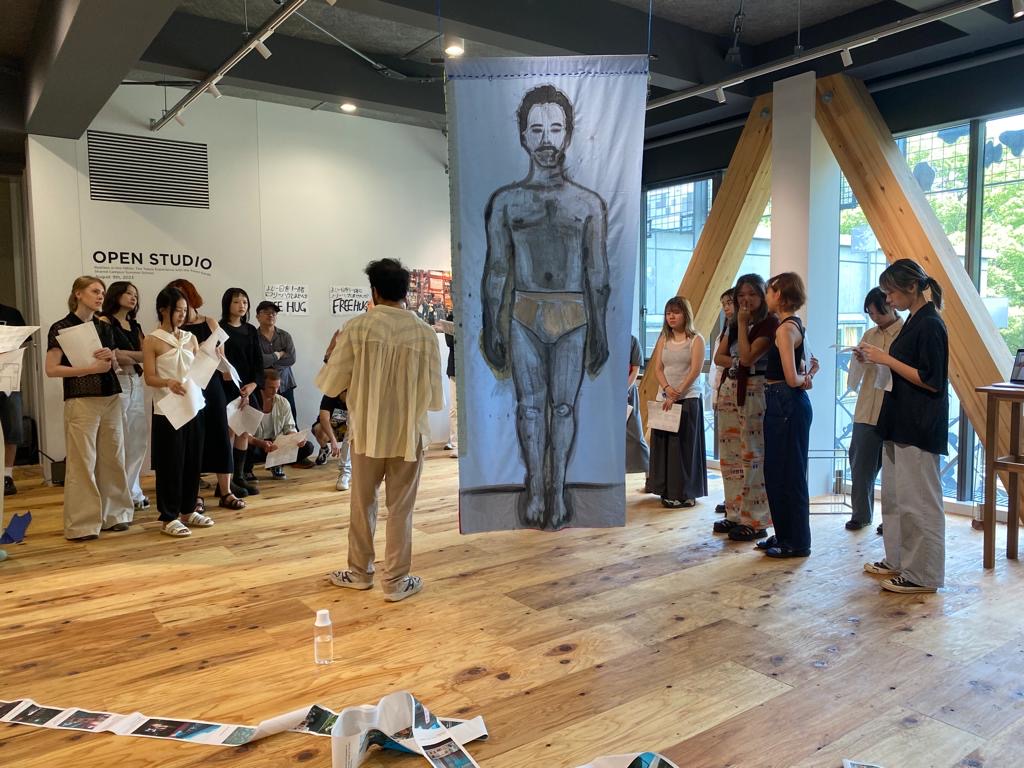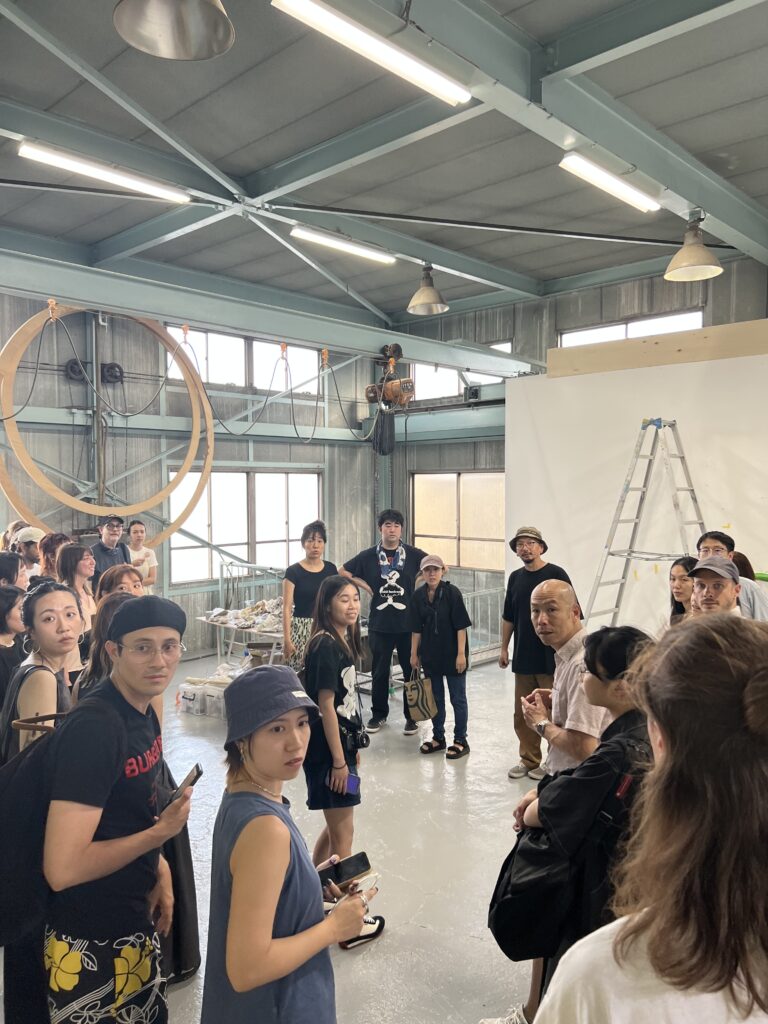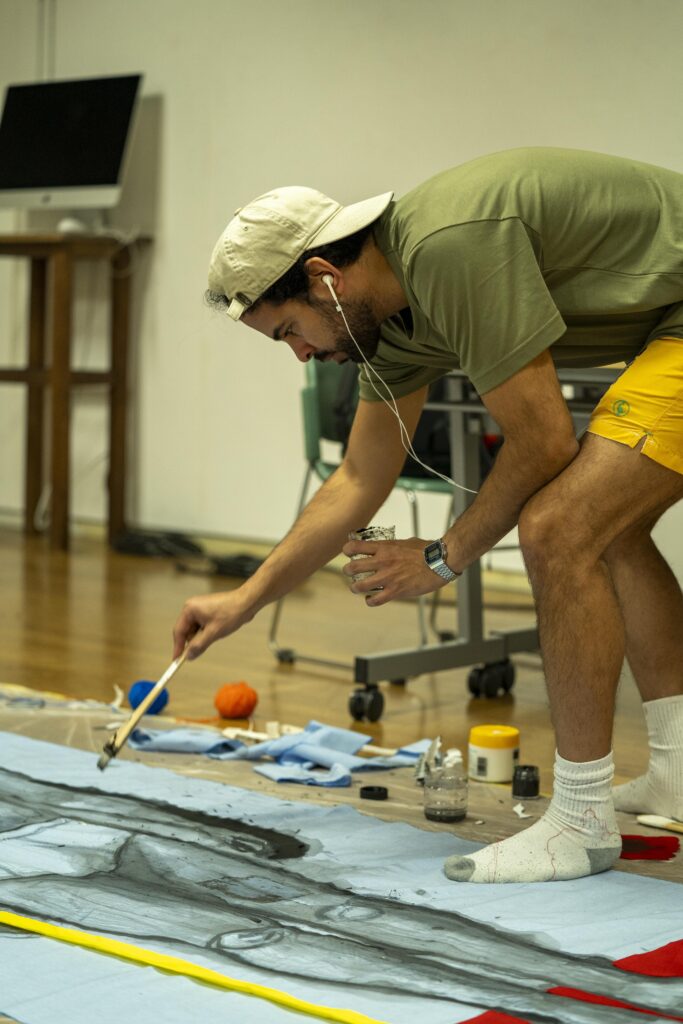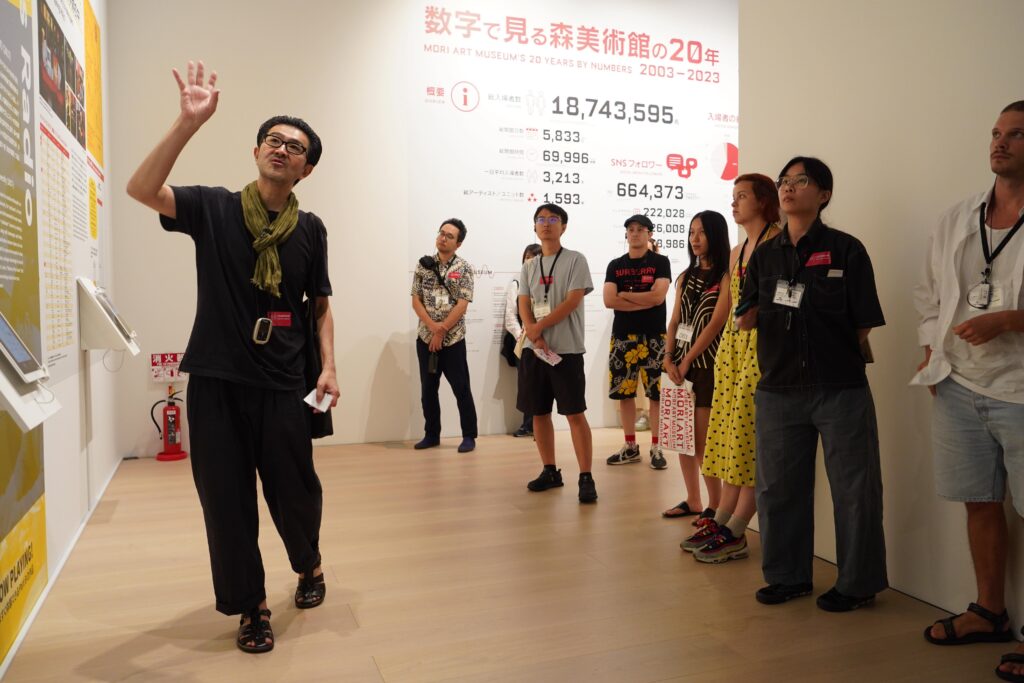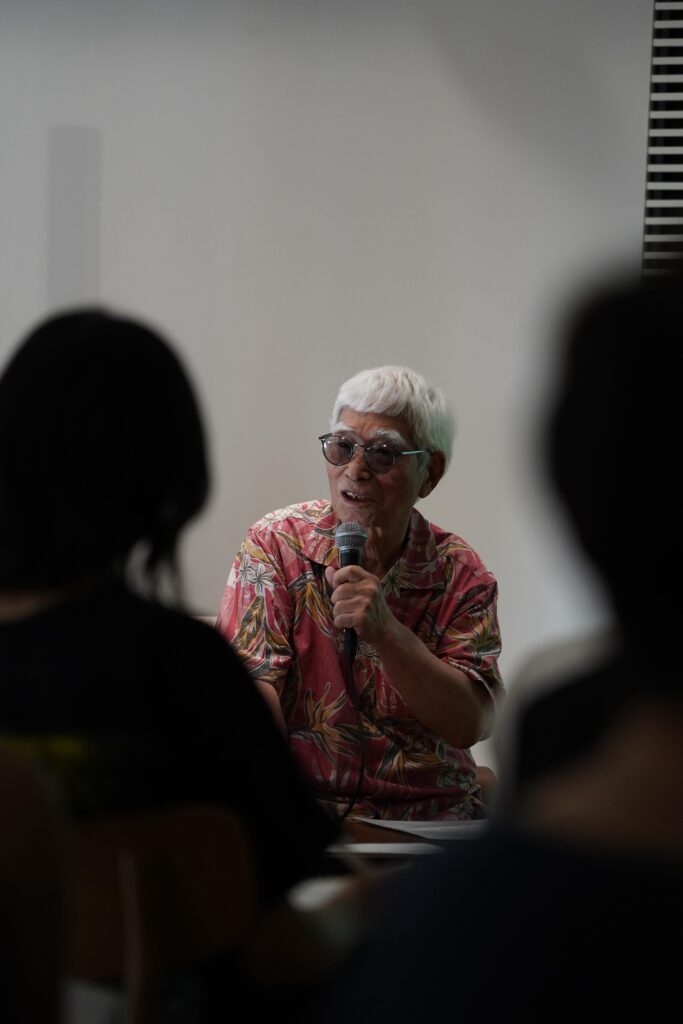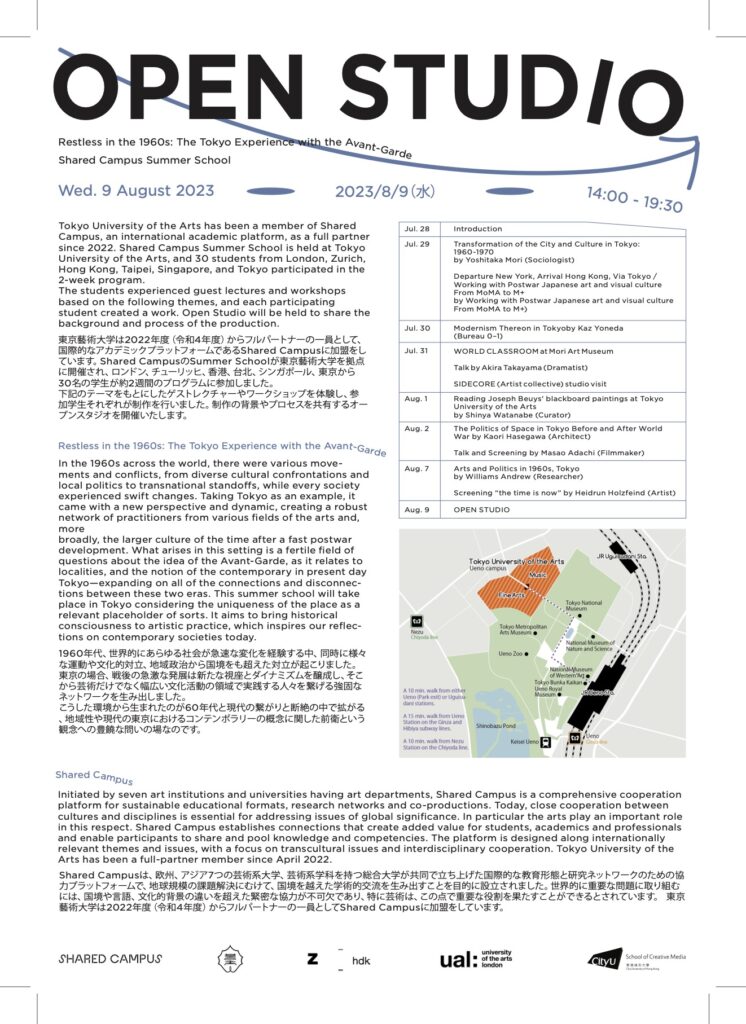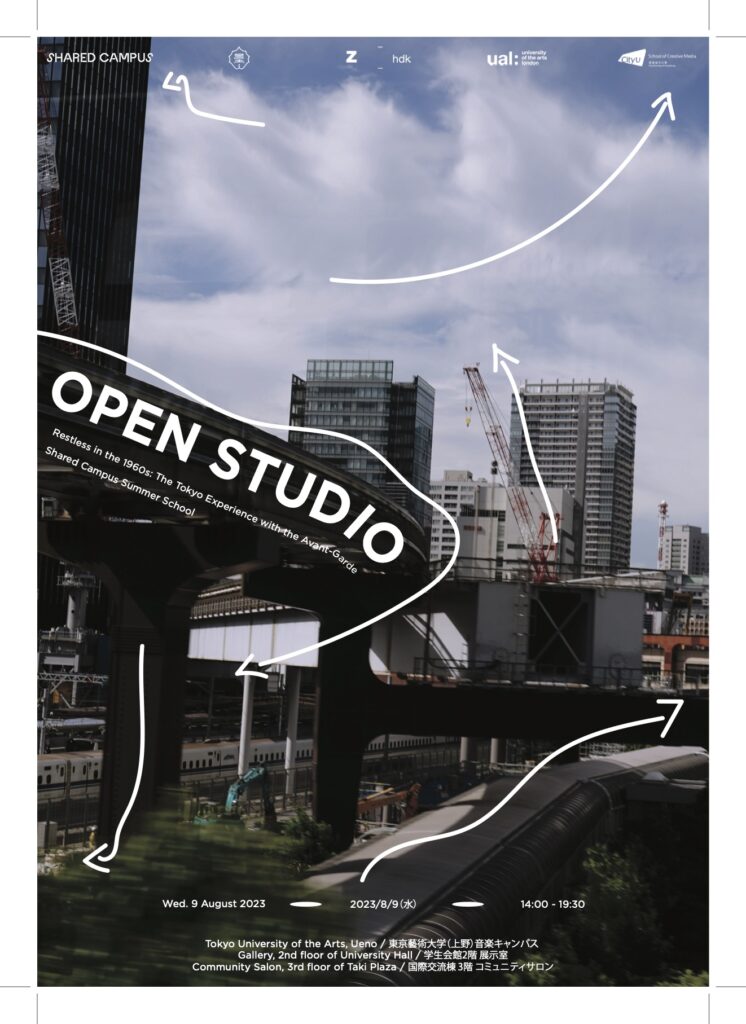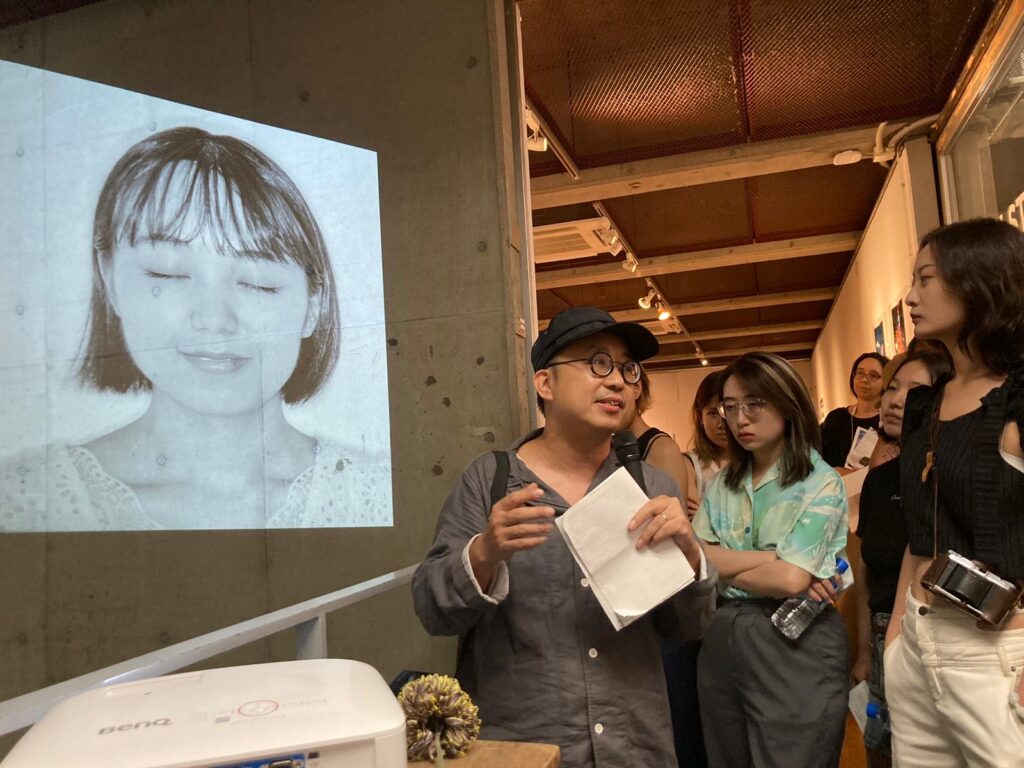[Shared Campus Summer School + IUEP 2023 Tokyo]
Restless in the 1960s: The Tokyo Experience with the Avant-Garde
DATE
2023 / 7 / 28 – 8 / 10
LOCATIONS (Tokyo, Japan)
Tokyo University of the Arts
Mori Art Museum
Irregular Rhythm Asylum
WHITEHOUSE Shinjuku
SIDE CORE studio
ART FACTORY Jonanjima
FACULTY MEMBERS
William Davis (Associate Professor, ZHdK)
Leung Chi Wo (Associate Professor, SCM)
Erika Tan (Reader, Central Saint Martins, UAL)
Yusaku Imamura (Professor, Graduate School of Global Art Practice, TUA)
Yoshitaka Mouri (Profesor, Graduate School of Global Arts, TUA)
Akira Takayama (Professor, Graduate School of Film & New Media, TUA)
Kaori Hasegawa (Lecturer, Faculty of Fine Arts / Department of Architecture, TUA)
Kenichiro Egami (Project Assistant Professor, Global Support Center, TUA)
Mei Miyauchi (Project Research Assistant, Global Support Center, TUA)
Desiree Ibinarriaga (Lecturer, Collaborative Design, Department of Design, Monash University)
GUEST LECTURERS
Doryun Chong (Vice Director, M+)
Heidrun Holzfeind (Artist)
Kaz T. Yoneda (Architect, Bureau 0–1, Inc.)
Masao Adachi (Film Director)
Shinya Watanabe (Lecturer, Temple University, Japan Campus)
SIDE CORE (Artist Collective)
Williams Andrew (Writer)
With a focus on avant-garde activities in Tokyo in the 1960s, this program explored the relationship between contemporary art, the city and the environment by reconsidering art that responds to society and the city of Tokyo as a vessel for artistic activities. Guest lecturers from diverse fields conducted presentations and workshops that provided an overview of activities in art, architecture, film, and social movements in Japan at that time. There were also opportunities to hear from artists who were active in the 1960s and to view rare archive footage. The program made use of art museums in Tokyo and the TUA archives, while also visiting artist studios and galleries to touch on the current art scene. The second half of the program allocated time for production, during which individuals and groups created and exhibited works to the public. It was an opportunity for participating students to receive valuable feedback from visitors from outside the university.
